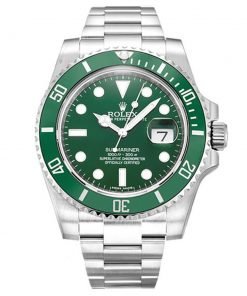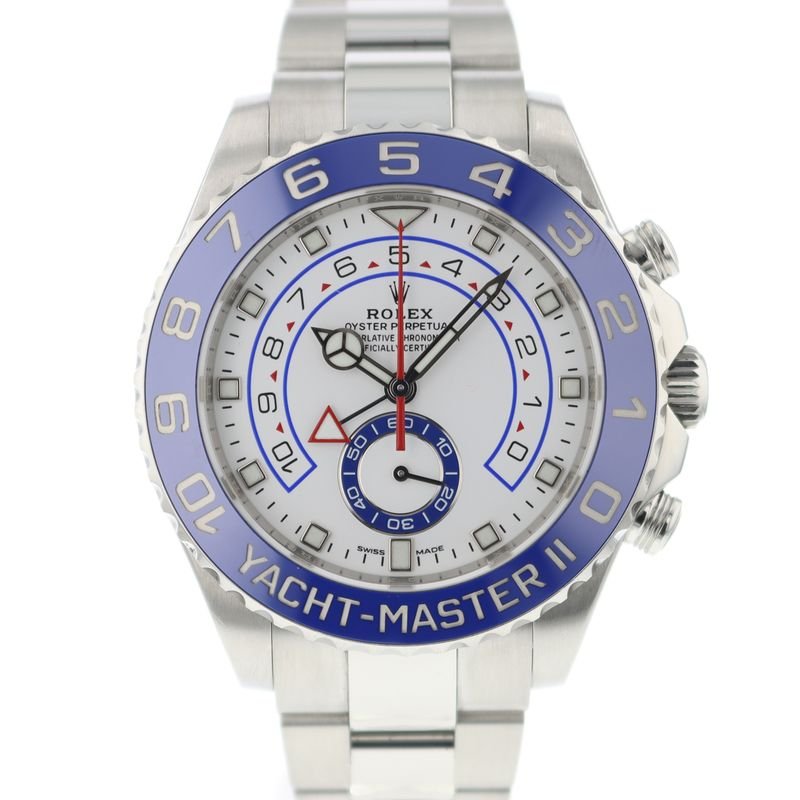Is The Rolex Submariner King of all Watches?
A Closer Look at the Iconic Dive Watch
With each iteration of the iconic Submariner, Rolex aims to make incremental improvements to deliver the most perfect iteration of their most iconic & sleek stylish dive watch.
Rolex Submariner Black Dial 116610LN
Rolex Submariner Two Tone 116613LB
Rolex Submariner Green Dial 116610LV
Rolex Submariner Black Dial 126613LN
Rolex Submariner Blue Dial 116613LB
Rolex Submariner Black Dial $99
Despite remaining in production for more than 50 years, the core design of the Rolex Submariner has remained largely unchanged throughout the decades. Rolex for $100 has continuously been evolving its iconic collection of sleek stylish dive watches as new materials and technologies have become available, and while some references were produced for less than a single year, others remained part of Rolex’s catalog for decades and stand out as quintessential examples of the brand’s best dive watch. In terms of its design, the iconic Rolex Oyster bracelet maintains the classic Rolex three-link style, a staple of the brand’s sports watches for many years. The combination of polished and brushed finishes on the bracelet adds depth and character to the watch’s overall appearance.
Size: 40mm x 12mm (Thickness)
Ref. No: 16710
Movement: Swiss Clone 3186 Automatic Movement with Functional GMT
Case: Polished 904L stainless steel case (same construction as genuine)
Crystal: Swiss Standard Scratch proof Sapphire Crystal, laser etched Rolex crown at 6 position
Dial: Black Dial
Bezel: Red/Blue Bi-Directional Rotating Bezel
Bracelet: Oyster Flip-lock Stainless Steel Bracelet with Easylink 5 mm comfort extension link
Clasp: Fold clasp
Back: Solid Case Back
Crown: Screw down crown with o ring
Functions: Hours, Minutes, Seconds, GMT, Date at position 3 (set via crown)
Remark: 1:1 replicated from a genuine watch sample
Water Proof: 100 Meters/10ATM
Rolex GMT Pepsi Review
The king of watchmaking, Rolex, has produced some popular watches over time but the Rolex GMT Pepsi is special. Since its inception in 1988, the Rolex GMT Pepsi has pushed itself into the brand’s story. When this watch was released, the popularity for it boomed. True to the brand’s DNA, this aviation tool watch quickly gained popularity with pilots and world travelers alike. So much so that we still see amazing Rolex GMT Pepsi vintage watches in great shape.
Fast forward 30 years and we are now looking at the modern version, reference 126710BLRO. This reissue, Rolex GMT Master II Pepsi, comes with an upgraded movement, ceramic bezel, and jubilee bracelet.
Since it’s re-release in stainless steel, the Pepsi is one of the most unattainable Rolex models today. I would argue that it’s even harder to find at an authorized dealer than a stainless steel Daytona.
So what makes this watch so special? In our Rolex GMT Master II Pepsi review we’ll discuss the features, followed by frequently asked questions, and then end with specs & pricing. Enjoy and we hope you’ll gain a finer appreciation for how exceptional this watch is with our Rolex GMT Master II Pepsi review.
Swiss Fake Watch Industry
Not long ago a subject came up in the comments which, well, comes up rather frequently in the comments: The continuing and apparently (I use the word advisedly) incurable shortage of certain stainless steel sports watches. The problem is not confined to Rolex nor to Audemars Piguet, although those two brands both have watches which have become poster children for a short or non-existent supply of watches available at retail (I say retail specifically because, as with anything else, you can have whatever you want as long as you are willing to pay for it).
Rolex, though not the only company tough to buy at retail, makes an interesting case study insofar as Rolex, when it comes to shortages, is the watch industry writ large. The fact that Rolex watches are difficult (not impossible, but difficult) to find at retail from an authorized dealer is well known and there have been endless discussions about the degree to which this may or may not be due to various factors. These include a deliberate holding-back by Rolex of watches from retailers (various hypotheses exist as to why the company might be doing that); deliberate hoarding of stock by retailers in order to increase street price; shortages in production due to pandemic-related factory closures; and so on. Rolex has said, officially, that the shortage is purely due to unprecedented demand. When the subject does come up in the comments readers sometimes express what I think is a natural skepticism over the idea that it is simply a matter of demand outstripping supply by a considerable margin – are there really that many more people who want a Rolex now than in, say, 2015, when I started at
Please use the sharing tools found via the share button at the top or side of articles. Copying articles to share with others is a breach of FT.com T&Cs and Copyright Policy. Email licensing@ft.com to buy additional rights. Subscribers may share up to 10 or 20 articles per month using the gift article service. More information can be found here.
https://www.ft.com/content/a7cbc3b7-f3b3-445c-bf64-51cedd5e9a29
In April, I decided to buy my wife a Rolex. Her 33rd birthday was approaching, and I needed a gift befitting a woman who in the past two years had not only changed career, but given birth in a pandemic-ravaged hospital and raised a child during violent protests near our home in Los Angeles. For months, it felt like the Rolex Oyster Perpetual had been following us. Its handsome blue face stared out from our favourite glossy magazines. Television commercials for the same model interrupted the Australian Open. And on Instagram, #perpetual was unavoidable. On the day we left the city for a new life in the suburbs, the Oyster Perpetual, a stainless steel miracle of horology, watched us drive past from a freeway billboard. It seemed like Rolex had spent millions marketing this $5,800 watch directly to us. So I popped down to my nearest authorised dealer to pick one up. At Ben Bridge Jeweler in a mall in Thousand Oaks, California, I found only empty cabinets and an apologetic salesperson. They didn’t have any Oyster Perpetuals, he said with a shrug. They didn’t have any Rolex watches at all. The store looked like a gang of ram raiders had just left and, when I found the same thing at other boutiques, something didn’t feel right. I scrolled through Rolex’s Instagram account and found the comments section festering in conspiracy. “Rolex produces a million watches a year,” wrote one follower. “Then grey market dealers buy them all up and sell them at a premium.” What was this grey market, I wondered. And could I buy my wife a watch there before her birthday in May? The inner workings of the Rolex company are cloaked in mystery, much like the complicated movements of its watches, which are invisible to the wearer. Rolex timepieces generate more than $8.6bn in sales annually, but the brand belongs to the Wilsdorf Foundation, which funnels its profits to worthy causes and the arts. The foundation is named after Hans Wilsdorf, an orphan who founded Rolex in 1905 and established the foundation 40 years later. For decades the Rolex watch has remained the ultimate status symbol — one in plentiful supply. In the 1960s Fidel Castro wore two at once. Those days are over.








